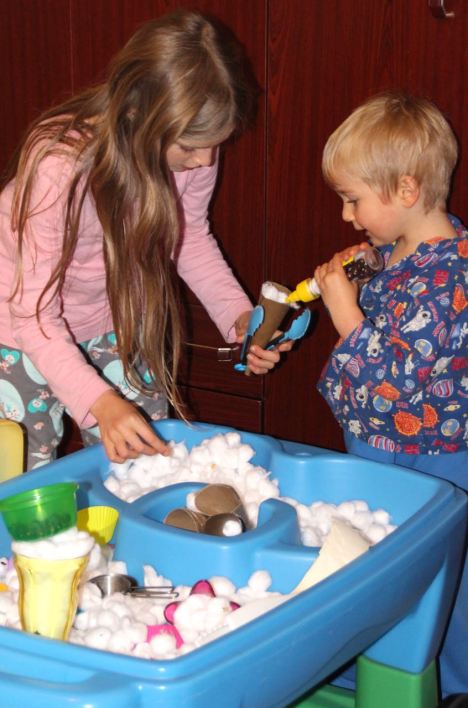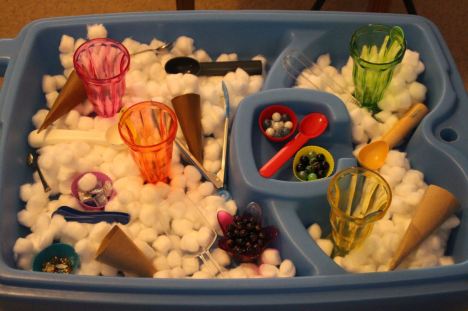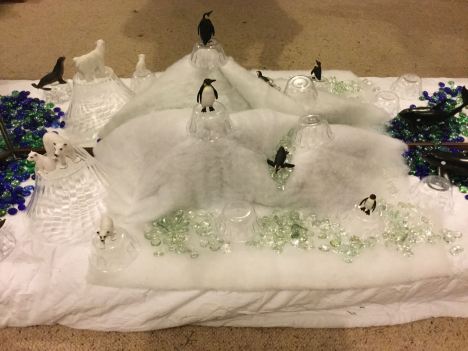
Mini-world play continues with our ice and snow landscape. Some wadding over rocks to create snow-capped mountains, plastic dishes for icebergs, glass jewels for water and ice-flow and a selection of plastic penguins, polar bears and a killer whale complete our scene. While not technically correct (for instance polar bears and penguins do not live in the same pole) it looked inviting and was something different.

As is usually the case for our mini-worlds, the older girls set up the scene repeatedly and the younger boys provided them with many opportunities to do so as they wrecked it almost immediately, with polar bears and killer whales eating penguins and beaching themselves on the mountains. Surprisingly the scene didn’t really interest the children long term, but was revived when they collected some boats and divers from the bath toys and NOW the little boys had some interest. Penguins dived into piles of jewel water and divers crashed their boats all over the place, fighting off killer whales along the way.
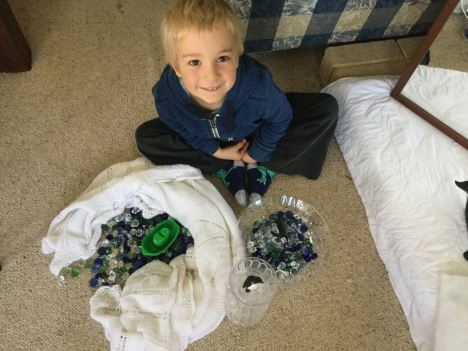
My 5 year old made a snow dam with a white blanket and spent quite some time building towers with the small plastic iceberg bowls and jewels. While the boys didn’t use the scene as I had imagined, they enjoyed it in their own way.

The 2 year old just wanted to tip and pour the jewels and insisted on taking them off the step and onto the carpet for her play. She also loved the bears and wanted to put them in her handbag and take them away to her bedroom, chucking a big tantrum becoming rather unhappy when told they needed to stay in the scene.
Target and Kmart now have a range of realistic plastic animal models similar to the Schleich brand but much more affordable and that is where I sourced this selection. Later on I will put them out again with some frozen sheets of ice in trays and a variety of ice blocks in the water trolley; perhaps in the summer months I think!
Filed under: sensory tubs | Tagged: homeschooling with toddlers, invitations to play, mini world, sensory tubs, small world play | Leave a comment »


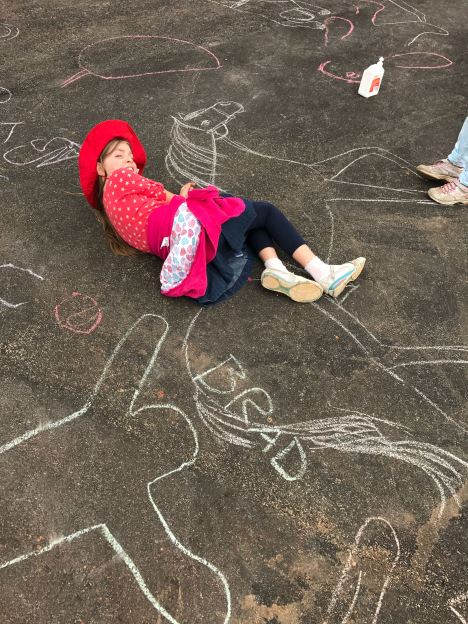
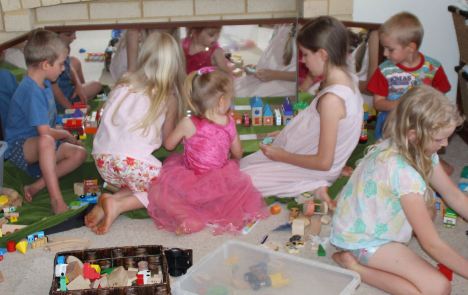
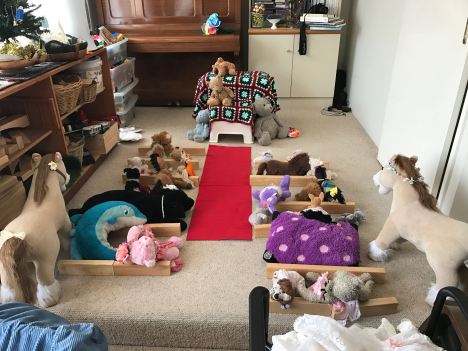

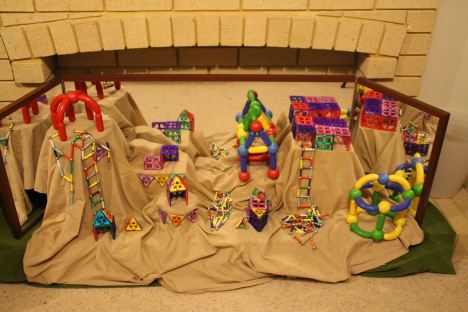



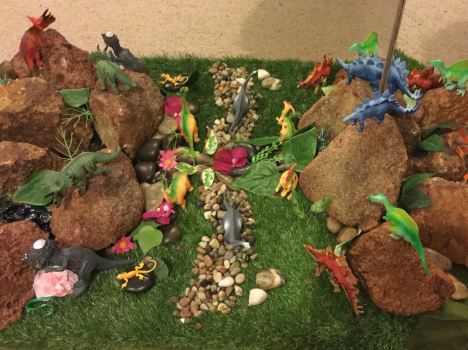









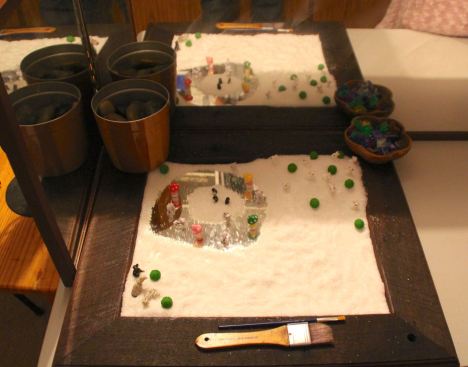 Epsom salts spread onto a mirror gives the impression of snow and the mirror showing through appears to be ice. I purchased a selection of miniatures that are actually terrarium decorations very cheaply on eBay and added brushes and some jewels and rocks. I later added a small sweeping brush to keep the salt off the edges of the mirror.
Epsom salts spread onto a mirror gives the impression of snow and the mirror showing through appears to be ice. I purchased a selection of miniatures that are actually terrarium decorations very cheaply on eBay and added brushes and some jewels and rocks. I later added a small sweeping brush to keep the salt off the edges of the mirror.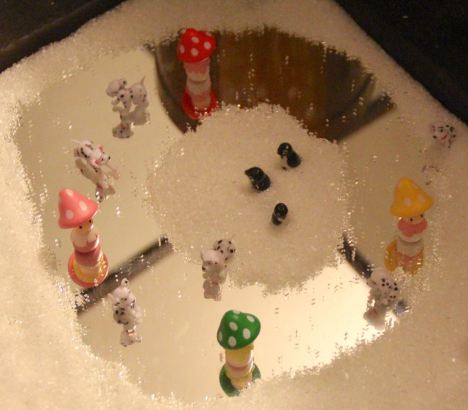

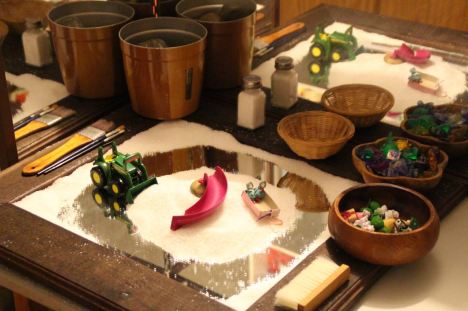

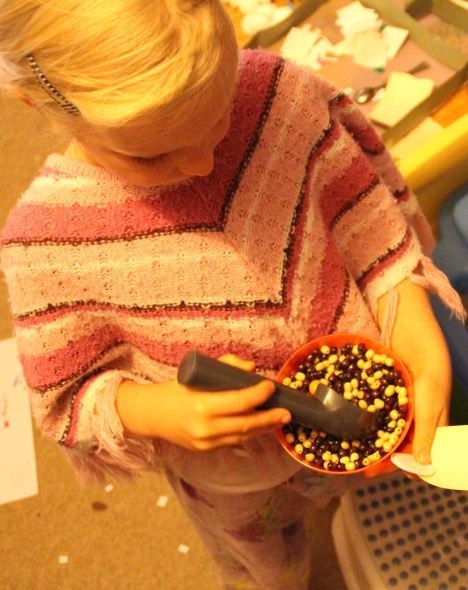 Cotton wool balls are a cheap base for a sensory tub and lend themselves well to being transferred by tongs, scoops or little fingers and the addition of some marbles, jewels and beads for toppings gave it a fun aspect. A few plastic Sundae cups, swizzle sticks, icecream scoops and sequins allowed for some interesting creations.
Cotton wool balls are a cheap base for a sensory tub and lend themselves well to being transferred by tongs, scoops or little fingers and the addition of some marbles, jewels and beads for toppings gave it a fun aspect. A few plastic Sundae cups, swizzle sticks, icecream scoops and sequins allowed for some interesting creations.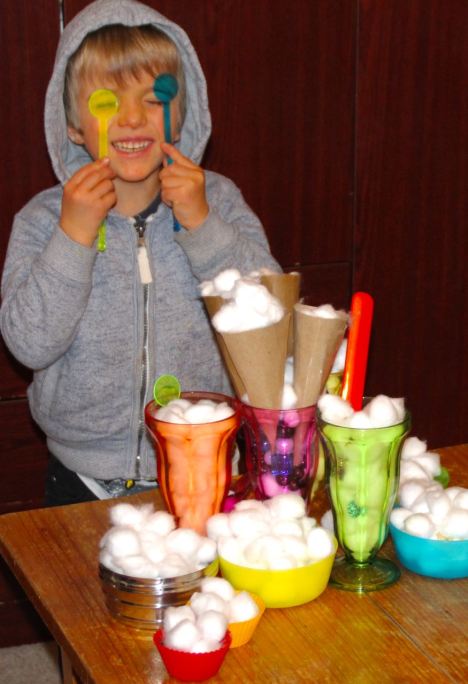 Having the sensory tub right next to the pretend play home corner area meant that the children could expand into dramatic play and they soon opened an ice-cream shop. There aren’t many play activities that can keep everyone from the 13 year old to the 2 year old happily occupied together, but this did the trick.
Having the sensory tub right next to the pretend play home corner area meant that the children could expand into dramatic play and they soon opened an ice-cream shop. There aren’t many play activities that can keep everyone from the 13 year old to the 2 year old happily occupied together, but this did the trick.


